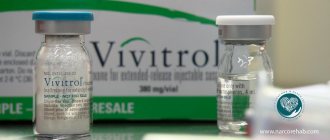Elevated leukocytes in a smear are an indicator of the inflammatory process in the genitals. In women, the norm of leukocytes is as follows: up to 15-20 (in the urethra up to 5, in the vagina up to 10 and in the cervix up to 20 units). The number of leukocytes in a vaginal smear increases sharply to 30-40 and 50 during inflammation (colpitis, vaginitis). The more of them there are in the smear, the more acute the disease. In case of an acute inflammatory process or STI, the leukocytes in the results of a smear for flora are quite elevated - “up to 50-100 in the field of view” or “leukocytes completely cover all fields of view.”
Assessment of leukocyte reaction in smear microscopy:
• no leukocytes, units. in p/z.; • up to 10 in p/z. - a small amount of; • 10 - 15 in p/z. - moderate amount; • 30 – 50 in p/z. and more - a large number; • 100 or more - leukocytes in the smear completely cover the visual field.
Moderate, large amounts and continuous coverage are assessed as signs of an inflammatory response of varying severity.
Causes of elevated white blood cells in a smear
A high number of leukocytes in a smear (more than 40-50), as mentioned above, in women is usually associated with an inflammatory process in the urogenital area (depending on the place of collection - in the vagina, cervix, urethra). Under what pathological conditions in gynecology does this analysis result occur?
Most often, leukocytosis in a smear occurs in the following diseases: * Colpitis - inflammation of the vaginal mucosa, * Cervicitis - inflammation of the cervical canal, * Urethritis - inflammation of the urethra, * Endometritis - inflammation of the uterine mucosa, * Adnexitis - inflammation of the uterine appendages, * Oncological diseases of the genital organs , * Sexually transmitted infections, * Dysbacteriosis of the vagina and intestines.
To find out the cause of leukocytosis, the gynecologist will prescribe clarifying tests (PCR, cultures). They can be taken from different locations, depending on the complaints and clinical picture. It is possible to take material from the following places: “U” - urethra, “C” - cervix, “V” - vagina, “R” - rectum, “O” - oropharynx.
Leukocytes in a smear in virgin girls
Inflammatory processes in the genital tract occur not only in girls and women who are sexually active. Various diseases, including those of an infectious nature, can be transmitted not only through sexual contact, but also through household contact (shared objects, violations of intimate hygiene, etc.). Therefore, leukocytosis in a smear can occur in children, teenage girls and virgins who have not had traditional sexual relations. To find out its causes, tests are also taken.
Taking a smear, PCR and culture for diagnosis from a virgin is carried out in the same way as for women who are sexually active. However, a gynecological speculum is not used; material is taken from the vagina through an opening in the hymen using special thin soft probes. According to indications and at will, material is taken for examination from the urethra and other localizations. The collection procedure, carried out by our gynecologists, is absolutely painless, damage to the hymen is excluded!
Do you want to know the answer to a question?
“Causes of leukocytes in a smear?”
Find out what tests you need to take for infections
White blood cells are elevated, but there is no infection
A very common situation! You need to know clearly that if there are a lot of leukocytes in a smear, the cause is a sexually transmitted infection. A smear simply does not reveal it - its diagnostic value is limited to a narrow range of microbes studied. A significant list of possible infections, which are the causes of elevated white blood cells in a smear, can only be identified by other methods for diagnosing vaginal discharge (PCR, culture, and ELISA blood test). Your gynecologist should tell you about this and refer you for an appropriate examination!
Possible methods for diagnosing the causes of high leukocytosis:
| Strokes | PCR | STD | PCR 12 18 |
| Florocenosis | Cytology | Tumor marker | NASBA |
☛ Thus, to clarify the cause of the increase in leukocytes in a smear in women, it is necessary to conduct appropriate laboratory examinations - PCR tests, cultures. If you are interested in taking all the necessary tests, you can contact us at the gynecology department at any time the clinic is open. Ready time 1-2 days. You can make an appointment by calling +7(495)790-0779 or online on the website.
Flora smear during pregnancy
In order for pregnancy to proceed favorably, a woman’s body must be as prepared as possible for it.
Therefore, as soon as the doctor establishes on a gynecological ultrasound the fact that the fertilized egg is in the uterus, it is recommended to immediately take a smear for STIs and biocenosis. Untreated and chronic infections can subsequently provoke spontaneous abortion and cause miscarriage. Sexually transmitted diseases such as chlamydia can cause infection of the child during his passage through the birth canal. In the test results of a pregnant woman, leukocytes are often elevated. Their number during this period can range from 15 to 30 units in the vagina and up to 5 in a smear from the urethra. This is due to the body’s natural reaction to physiological stress, since during pregnancy the woman’s immune system is activated. This condition is considered normal and is regulated by estrogen.
Treatment of leukocytes in a smear
Based on the results of a complete comprehensive diagnosis, our gynecologist individually selects a treatment regimen for the inflammatory process. It is a full examination that will reveal the true reason why there are many leukocytes in the smear and treatment in this case will be effective. It is TREATMENT , and not treatment until the next exacerbation, as happens in most cases.
Rarely, there is a situation where good treatment has been carried out, but the leukocytes in the smear remain elevated. This is one of the most difficult problems to solve. It seems that in such cases this is due to dysbiosis at the level of the vagina and cervix. Even multiple courses of antibiotic therapy often do not help; infections after treatment with antibiotics may also not be detected. And the leukocytes in the smear are elevated and remain at a high level. In such cases, it is recommended to periodically conduct courses of local sanitation (suppositories with antibacterial components) and persistently fight to maintain normal intestinal microflora.
Why do a cervical smear?
The cervical canal is a tubular section of the cervix that connects the uterine cavity to the vaginal cavity. It is easily accessible to the gynecologist during an examination with an obstetric speculum. The question of examining a smear from the cervical canal arises when it is necessary to detect:
- infectious pathogens,
- human papilloma virus,
- inflammatory processes of the genital area;
- benign formations.
The human papillomavirus can cause cervical erosions and cause malignant processes. A smear from the cervix (PAP test, cervical smear) helps to identify dangerous cancer processes of degeneration long before the onset of oncology. This is a highly effective way to prevent cervical cancer.
Analysis result
If you go to a laboratory that is not affiliated with the clinic, you will probably receive the results of the smear in your hands. How to read this encrypted piece of paper? What is the result of a smear for microflora in women? What does the transcript show? It reflects the presence of “bad” and “good” cells, helping to diagnose the disease.
Leukocytes
Leukocytes, which are designated Le in the analysis, neutralize the infectious agent. An increased content of leukocytes signals inflammation, when single protective cells are the norm. In the vagina their number should not exceed 10, in the cervical canal - 30, in the urethra - 6.
Epithelium
Squamous epithelium (SEP) lines the walls of the vagina. If its single cells are included in the smear, this is normal. If entire layers are visible, this is a signal of inflammation. If the analysis shows their absence, then this is a sign of destruction of the mucous membrane.
Its rate may vary, but should not exceed 4-10 pieces.
Slime
This is a secretion produced by the glands of the cervical canal. Its moderate amount is allowed in the vagina. A sign of infection is the presence of mucus in the urethra.
Gonococci
Indicated by the Latin letters Gn - gonococci signal gonorrhea. They should not be present in healthy microflora.
Trichomonas
You can find out about the presence of Trichomonas in the genitals in the column opposite the inscription Trich. A positive test for their presence diagnoses trichomoniasis.
Key cells
These are epithelial cells that are surrounded by bacteria, usually Gardnerella. A healthy woman should not have them. Their presence indicates bacterial vaginosis.
Candida
Candida fungi are considered opportunistic because they only become pathogenic under certain conditions.
Gram-positive rods
The presence of Doderlein rods is reflected in the analysis by the inscription Gr (+). If the result is negative, then the female microflora is disturbed.
Gram-negative bacteria
A good stroke should have Gr (-) in this line. To gram-negative bacteria
include coccal infections, the presence of which signals dysbiosis and inflammation.
The ability to read a smear result does not give women the right to prescribe their own treatment.
Preparing for a cervical smear test
The optimal period for visiting a gynecologist is 5 days before the start of your period or 5 days after its end (the beginning of the cycle). Taking a smear in the middle of the cycle prevents blood from entering the test material. 2-3 days before the procedure you must:
- abstain from sexual intercourse;
- carefully observe intimate hygiene;
- stop using vaginal medications (suppositories, etc.);
- do not use vaginal contraception.
After meeting all the above conditions, you can make an appointment with a gynecologist to take a smear from the cervix.
Taking a cervical smear
The procedure is carried out quickly and almost painlessly. The gynecologist takes a cytological smear from the cervical canal with a special spatula. He obtains several epithelial samples from different parts of the cervical canal. The biological material is then applied to a glass slide and sent to the laboratory for detailed cytological examination. Compliance with the rules for taking a smear is very important, since neglecting them can lead to false results of the smear analysis or it will be uninformative and the study will have to be repeated.
Composition of microflora
Microorganisms are part of the human body
. Some of them become helpers, others become enemies, and others seem to be wondering who to join.
The microflora of the female genital organs is an example of such a confrontation. More than 95% of all microorganisms inhabiting the vagina are Doderlein bacilli, or lactobacilli
. They provide healthy microflora by producing lactic acid, which is destructive of pathogenic bacteria, and hydrogen peroxide, which has an antimicrobial effect.
Who is the remaining 5%? Surprisingly, these can be various cocci, mycoplasmas, gardnerella, candida and other microorganisms
, which we are accustomed to consider pathogenic. And this is the norm. Their harmonious coexistence guarantees a woman a healthy state. As soon as your immune system weakens, the number of lactobacilli produced drops, the acidity of the environment decreases accordingly, and pathogenic bacteria begin to multiply intensively. A woman becomes vulnerable to inflammation and infectious diseases.








